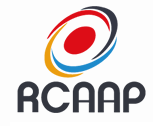Degradability of integral sugar cane treated with different sodium hidroxide levels
DOI:
https://doi.org/10.5433/1679-0359.2007v28n3p503Keywords:
Cattle, Chemical treatment, Feeding, Nutrition, Ruminant.Abstract
The experiment was carried out being used four bovine cannulated at rumen. Corn silage and chopped sugar cane, treated with 2% NaOH were furnished to the animals during the experiment. Four treatments consisting of sugar cane treated with 0, 2, 4 and 6% NaOH were evaluated by ruminal incubation using nylon bags. Dry matter (DM), organic matter (OM), neutral detergent fiber (NDF), acid detergent fiber (ADF), cellulose (CELL) and hemicellulose (HEM) disappearance were evaluated in 0, 6, 12, 24, 48, 72, 96 and 144 hours of ruminal incubation. Potencial degradability (PD) and effective degradability (ED) were determinated using the model suggested by Orskov & Mc Donald (1979), accepting a passage rate of 5%/hour. It was observed highest (P < 0.05) PD and ED, respectively, for DM (62,01% and 49,39%), OM (62,98% and 49,10%), NDF (57,61% and 34,75%), ADF (55,67% and 35,25%), CEL (64,89% and 36,73%) and HEM (61,44% and 35,72%), in sugar cane treated with 6% NaOH. It can be concluded that the chemical treatment of the sugar cane with 6% NaOH promoted highest potential degradability of the dry matter, organic matter and fibrous fraction. PD and ED values of the fibrous fraction of the sugar cane treated with 6% NaOH, justify the use of this treatment in conditions in that these were used.
Downloads
Downloads
Published
How to Cite
Issue
Section
License
Copyright (c) 2007 Andréa Pereira Pinto, Ivone Yurika Mizubuti, Édson Luis de Azambuja Ribeiro, Marco Antonio da Rocha, Mauro Freitas Silva Filho, Juliana Tiemi Kuraoka

This work is licensed under a Creative Commons Attribution-NonCommercial 4.0 International License.
Semina: Ciências Agrárias adopts the CC-BY-NC license for its publications, the copyright being held by the author, in cases of republication we recommend that authors indicate first publication in this journal.
This license allows you to copy and redistribute the material in any medium or format, remix, transform and develop the material, as long as it is not for commercial purposes. And due credit must be given to the creator.
The opinions expressed by the authors of the articles are their sole responsibility.
The magazine reserves the right to make normative, orthographic and grammatical changes to the originals in order to maintain the cultured standard of the language and the credibility of the vehicle. However, it will respect the writing style of the authors. Changes, corrections or suggestions of a conceptual nature will be sent to the authors when necessary.


















